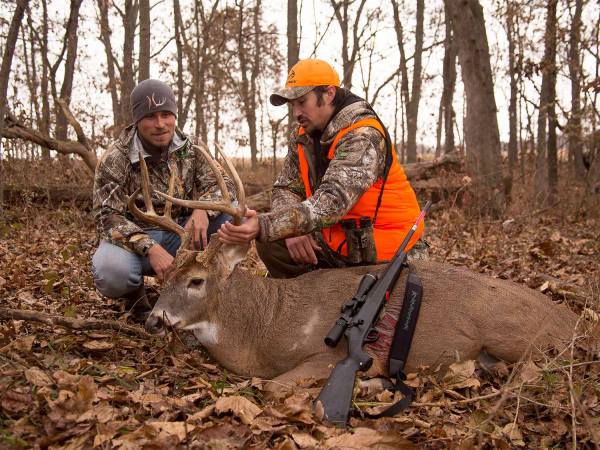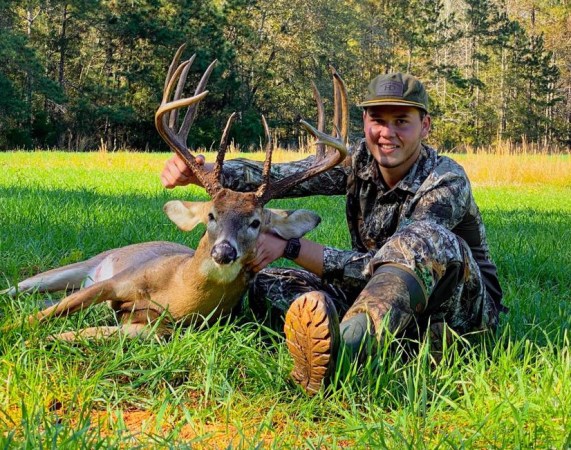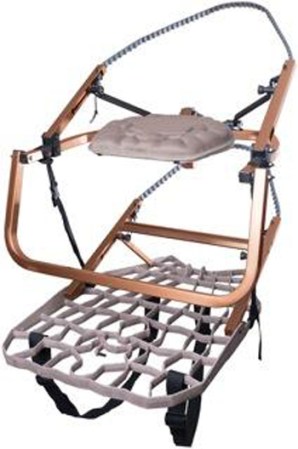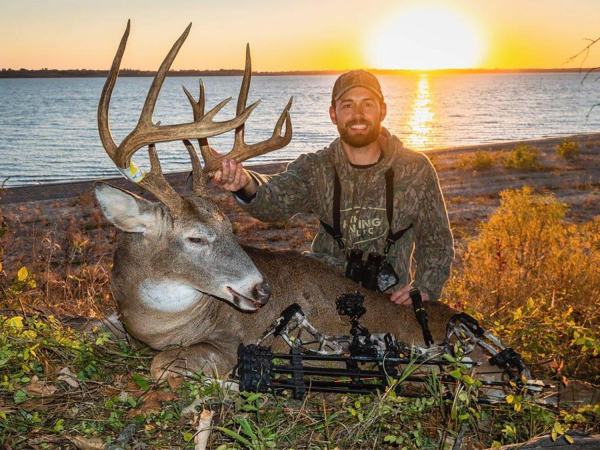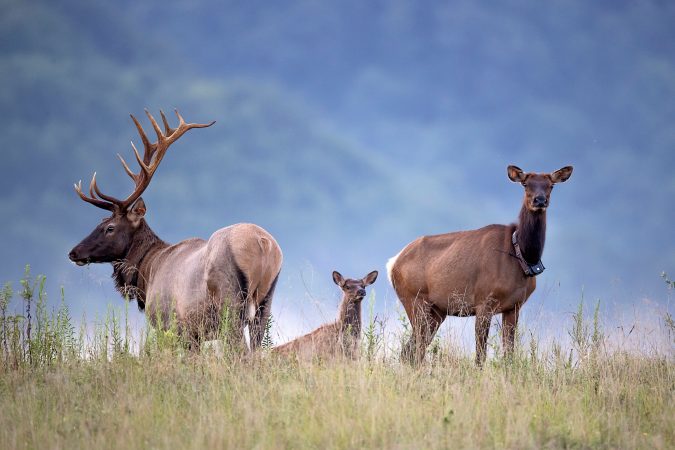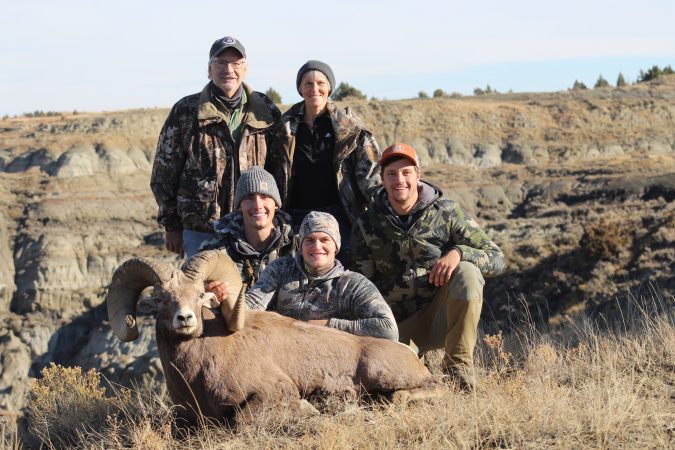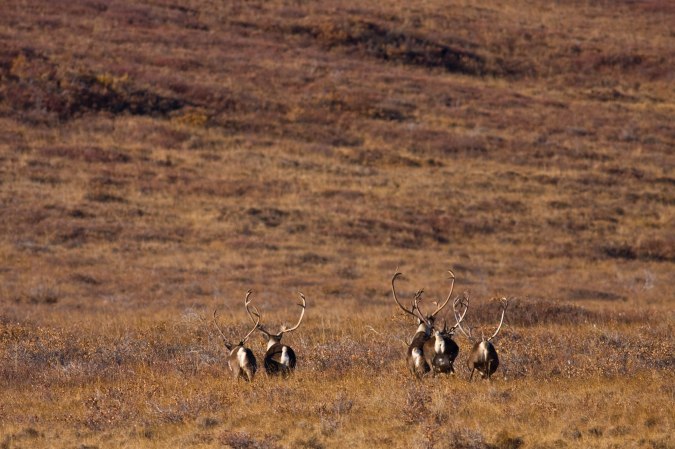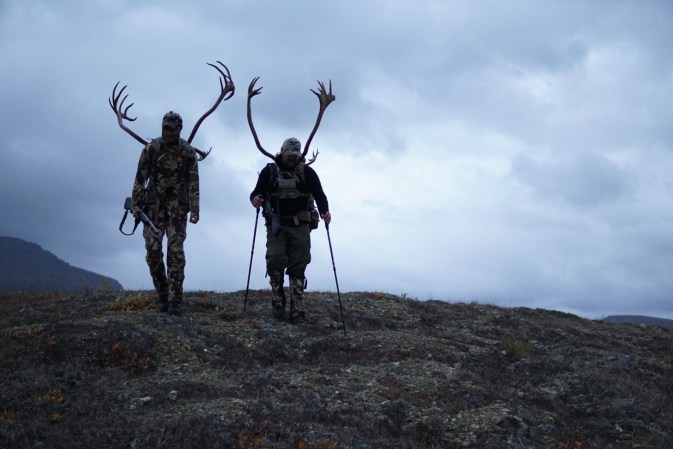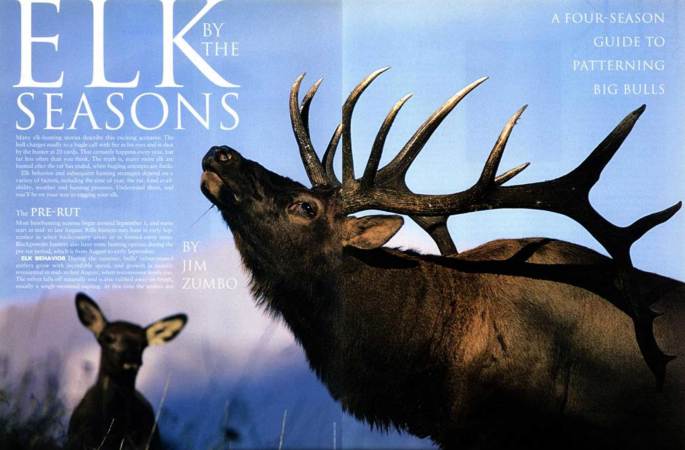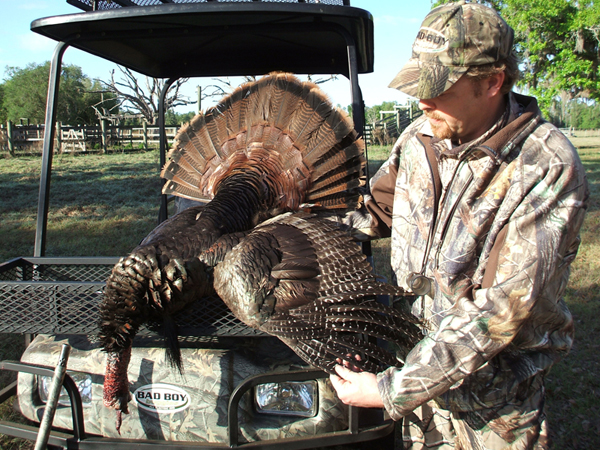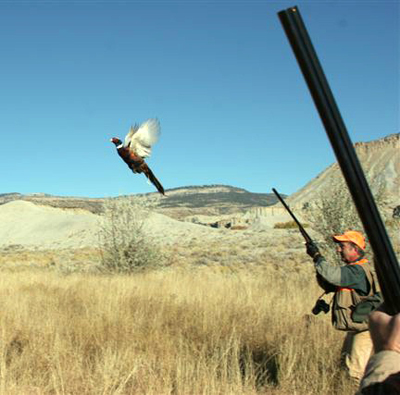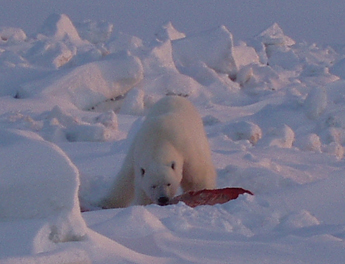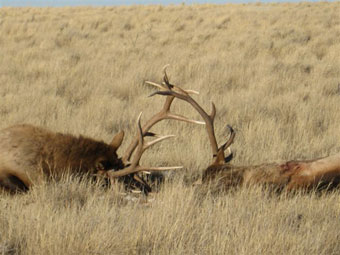Captains Meriwether Lewis and William Clark and a few dozen companions in their “Corps of Discovery” got one of the choicest assignments in the history of outdoor adventure. For 28 months they camped in a new place almost every evening. They hunted and feasted on turkeys, deer, grouse, elk, bison, pronghorns and grizzly bears. They caught hundreds of fish in a day.
If contemplating their quest makes you think you were born 200 years too late, cheer up. There’s still time to find your own adventures in the forests, fields and streams that the Corps of Discovery plied. Beginning in this issue and through the next eight issues, join OUTDOOR LIFE in retracing Lewis and Clark’s steps and discovering adventures they would relish. This month’s segment follows the first leg of the explorers’ journey up the Missouri River, which began at St. Charles, Mo.
A DEER HUNTER’S PARADISE, THEN AND NOW
Moving three boats with 20 tons of cargo up the lower Missouri River, sometimes by tow ropes, was an arduous task, and the Corps of Discovery worked up wicked appetites. Each day, the explorers consumed as much as 8 pounds of meat per man.
George Drouillard’s skill as a hunter got him out of most of the grueling labor of hauling the boats. The son of a Shawnee mother and a French-Canadian father, Drouillard was charged with exploring the forests along the river to put fresh venison in the pot.
Drouillard would feel right at home in the trackless wilds of 9,954-acre Big Muddy National Fish and Wildlife Refuge (NFWR). The refuge consists of eight units along the 250-mile stretch of Missouri River between St. Louis and Kansas City. There’s no limit to the number of doe permits archers and gun hunters can obtain. Like Drouillard, you can shoot as many deer as you can carry back to the boat, provided you have the bonus permit required.
Hunting Big Muddy NFWR isn’t only about shooting in quantity. The riverlands produce trophies, too. The world-record non-typical whitetail, a stupendous 333 7/8-inch brute, came from St. Louis County, not far from the banks of the Missouri River.
From a hunter’s perspective, the best thing about Big Muddy NFWR is its relative inaccessibility. The only way to reach much of this land is by the river. Most hunters stick to areas they can reach with a four-wheeled vehicle, so Big Muddy remains the province of pioneer spirits who tie their boats to root wads and break trail to unclaimed turf.
Permanent tree stands and screw-in steps aren’t allowed, but this isn’t a problem. Straight, tall ash and sycamore trees are plentiful, and seemingly made to order for climbing stands. You seldom have to walk more than a few yards from the banks of the river to find a prime tree-stand site, which helps to minimize your scent.
Boats and barges ply the river year-round, so deer won’t pay attention to the sound of a boat approaching, even if it carries a hunter. Walk stealthily and have an arrow nocked or a shell in the chamber as you approach the tree where you plan to hang a stand. You might find a dozen deer browsing beneath it.
–For maps and information about Big Muddy NFWR, call 573-876-1826 or visit https://midwest.fws.gov/BigMuddy/
SMOKY WATERS AND TURKEY BLUFFS
Venison was the Corps of Discovery’s main food staple, but they augmented their menu with Eastern wild turkeys. They were in the right place for gobblers. Nowadays hunters in Missouri kill more toms each season than in any other state. The 2003 spring harvest topped 58,000 birds. Compare that to an average of about 13,000 gobblers for other states, and you’ll get an idea of just how terrific turkey hunting is in the Show-Me State.
In addition to a three-week spring turkey season, Missouri has a two-week firearms season in October and an archery season that begins October 1 and runs through January 15. One great place to enjoy the turkey-hunting bounty has a strong link with the Lewis and Clark company.
The Corps of Discovery spent June 1-2, 1804, at the mouth of the Osage River. Clark, the expedition’s mapmaker, wanted to measure the rivers and make astronomical observations so he could calculate the spot’s latitude and longitude. For an observatory, he used a rocky promontory that overlooked the confluence. It became known as “Clark’s Hill.”
Clark probably wasn’t alone when he went there. The initials “JCS” and “CEF” carved into a limestone outcrop near the top indicate that Pvt. John Shields (one of the expedition’s “nine young men from Kentucky”) and the star-crossed Sgt. Charles Floyd (the only Corps member to die during the expedition) might have tagged along with Clark. The outcrop is in the Clark’s Hill/Norton State Historic Site. The Missouri Department of Natural Resources maintains the site, which will be accessible to the public beginning in May 2004.
Hunting isn’t allowed on the DNR land, but the Missouri Department of Conservation welcomes turkey hunters on its adjoining Smoky Waters Conservation Area. This 976-acre area has primitive camping right on the bank of the Missouri River.
Hunting ends at 1 p.m. daily during Missouri’s spring turkey season, so in the afternoon you’ll be free to climb Clark’s Hill and enjoy the vista he surveyed in 1804. If you can’t resist venturing off designated trails, follow Lewis’s example and be sure to carry a sturdy knife. You never know when you might need it.
Lewis and Clark’s crew members weren’t all consummate woodsmen. For example, 18-year-old Pvt. George Shannon repeatedly got lost. If you’d like to lose yourself in first-rate turkey country along Lewis and Clark’s route, the Cedar Creek District of the Mark Twain National Forest is your best bet. You can go for days without seeing another person in this 15,000-acre expanse of timbered ravines and abandoned ridge-top fields. The land is undeveloped except for the modest Pine Ridge Recreation Area off Highway Y seven miles east of Ashland. An extensive system of logging roads provides easy access to the interior of the area, but be prepared to walk. Motor vehicles are prohibited.
Here’s where to go for more information.
–Smoky Waters Conservation Area, 573-884-6861, www.conservation.state.mo.us/cgi-bin/atlas/ search.cgi?cgistate=1&area=9524.
–Clark’s Hill State Historic Site, 800-334-6946, www.mostateparks.com/clarkshill.htm.
–Cedar Creek Ranger District, Mark Twain National Forest, 4549 State Road H, Fulton, MO 65251, 573-592-1400.
A FINE KETTLE OF CATFISH TO CATCH
Outdoorsmen who neglect work and chores in order to fish will identify with Pvt. Silas Goodrich. The Massachusetts native distinguished himself as the company’s best fisherman. Once, when other game was “scerce,” Goodrich and the rest of the crew organized a sort of fishing derby to see how many fish they could catch in a day. The final tally topped 800 and included 490 catfish.
Catfish still are plentiful in the “Mighty Mo,” and they grow to epic proportions. Access points in or near river towns are plentiful. Hardly a year goes by without some lucky angler hauling in a blue or flathead cat in the 80- to 100-pound range, and 40- to 50-pounders are too common to garner anything but local notice.
Blues, the bruisers of the catfish clan, are creatures of open water and strong current. Channel and flathead cats are more likely to haunt areas off the main river channel. Cut shad is the most convenient bait, but if you want to catch the biggest blues or flatheads, bait up with frisky live shad or sunfish 4 to 6 inches long.
Anglers with johnboats have good luck drift-fishing around the ends of rock wing dikes. Big blues also lie in shallow depressions on the bottom of the main channel, waiting for prey.
Another boat-fishing strategy is to launch a flotilla of jug lines at sunset and follow them downriver. Keeping up with them in the dark is a little like herding cats, but the sight of a white gallon jug performing a cross-river slalom makes it all worthwhile.
Bank lines supply the main ingredient for many riverside fish fries. These start with an 8-foot length of concrete reinforcing rod wedged among the rocks of a wing dike. Tie a few feet of braided nylon cord to the rebar and add a 2/0 forged steel hook at the opposite end. Anchor the rig with a 1-ounce sinker and you’re ready to fish.
Columbia Bottom Conservation Area (4,318 acres) sits at the confluence of the Missouri and Mississippi rivers, minutes away from downtown St. Louis and a bonanza of Lewis and Clark museums and historic sites. A disabled-accessible boat ramp serves boaters, and land-bound anglers can fish rocky banks, wing dikes or 30-foot-deep scour holes. Besides catfish, you could tie into a paddlefish, a sturgeon or a powerful freshwater drum.
When you get your fill of fishing, take one of the area’s hiking and biking trails to the confluence viewing platform. The Corps of Discovery passed by this spot in May 1804.
–Contact: Columbia Bottom, 636-441-4554; www.conservation.state.mo.us/areas/areas/bottom/.
Special thanks to Yahama Motor Corporation for providing the Outdoor Life Lewis & Clark expedition with ATVs.
Places to See While You’re in Missouri
L&C Trail Waypoints
1 Jefferson National Expansion Memorial St. Louis, 314-655-1700, www.nps.gov/jeff
2 William Clark’s grave Bellefontaine Cemetery, St. Louis, www.interment.net/data/us/mo/stlouis/bellefontaine/belle.htm
3 Columbia Bottom See story, p. 64
4 Confluence Point State Park West Alton, 800-334-6946, www.mostateparks.com/confluence.htm
5 The Lewis & Clark Monument and Boat House St. Charles, 636-947-3199, www.lewisandclarkcenter.org
6 Daniel Boone Home/Boonesfield Village Defiance, 636-798-2005, www.geocities.com/Athens/Parthenon/7109
7 Clark’s Hill State Historic Site See story, p. 62
8 Smoky Waters Conservation Area See story, p. 62
9 Cedar Creek Ranger District See story, p. 62
10 Big Muddy NFWR See story, p. 61
11 Fort Osage Historic Site Sibley, 816-650-5737, www.historicfortosage.com
12 Lewis & Clark State Park Rushville, 800-334-6946 www.mostateparks.com/lewisandclark.htm
Missouri hunting and fishing permits and regulation booklets are available by phone at 573-751-4115 or online at www.conservation.state.mo.us/about/permits.
LEWIS & CLARK BICENTENNIAL EVENTS
2003 –Falls of the Ohio, Oct. 14-26, 2003, Louisville, Ky. and Clarksville, Ind. 502-292-0059
2004
IN MISSOURI
–Territorial Militia Muster, Fort Osage, Sibley, 816-650-5737.
–Louisiana Territory Transfer, March 12-14, St. Louis, 314-516-5255, www.umsl.edu/~loupurch/flags/ceremony.html
–Three Flags Ceremony, March 12-14, St. Louis, 314-516-5864
–Lewis & Clark Heritage Days, May 14-23, St. Charles, 800-366-2427.
–Preparations Complete, The Expedition Faces West, May 14-23, St. Charles, 636-946-7776
–Lewis & Clark Trad’n Days, June 27-28, Weston, 888-635-7457
–Boy Scout Cupbord Creek Encampment, May 28-30, Ike Skelton Training Site, Jefferson City, 800-726-8852, www.bsa-grc.org/cupbord
–Boy Scout Franklin Island Rendezvous, June 4-6, Franklin Island Conservation Area (same web site, phone as above)
–Independence Day 1804 Celebration, July 3-4, Kansas City, 800-858-1749
ACROSS THE COUNTRY
–Expedition Launch, March 12-14, Wood River, Ill.,618-251-5811, www.lewisandclark200.org/calendar/signature events/sig_ events2.html
–Heart of America: A Journey Fourth, July 3-4, Atchison, Ks., and Kansas City, Mo., 816-691-3846
–First Tribal Council, Fort Atkinson Historical Park, July 31-Aug. 3, Fort Calhoun, Neb., and Elmwood Park, Omaha, Neb., 402-471-3368
–Oceti Sakowin Experience: Remembering and Educating, Aug. 27-Sept. 26, Chamberlain-Oacoma, S.Dak., and Tribal Lands throughout South Dakota, 605-473-051
–Circle of Cultures, Time of Renewal and Exchange, Oct. 22-31, Bismark, N.Dak., 701-663-4758
2006
–Confluence With Destiny: The Return of Lewis and Clark, Sept. 23, St. Louis, Mo., 314-655-1600, www.nps.gov/jeff/lewisclark2/homepage/homepage.htm
–More national observances: www.lewisandclark200.org/calendar/state_calendar.html
For more information on the Lewis & Clark Adventure, go to www.outdoorlife.com.

